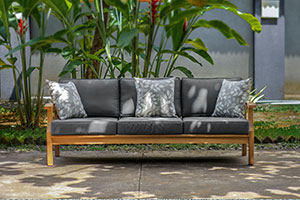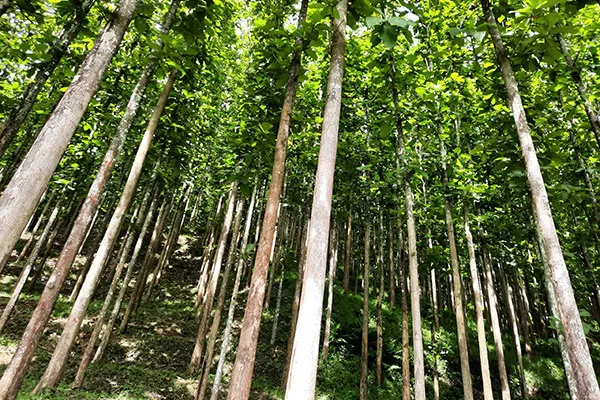Teak wood, known for its exceptional quality, durability, and aesthetic appeal, has held a revered position in the world of woodworking for centuries. Derived primarily from the Tectona grandis tree, native to the tropical regions of South and Southeast Asia, teak is celebrated for its unique combination of natural attributes that make it a sought-after material for furniture, decking, flooring, and various other applications. This article delves into the rich history, distinctive characteristics, environmental considerations, and modern uses of teak wood.
Historical Significance and Geographic Origin
Teak’s historical significance can be traced back to ancient civilizations, where it was highly valued for its versatility and resilience. The use of teak dates as far back as the 7th century, with evidence of its utilization in shipbuilding and construction in regions like India, Myanmar, and Thailand. The appeal of teak was not only due to its robust nature but also its natural resistance to pests, decay, and adverse weather conditions.
The primary geographic region for teak cultivation and production is South and Southeast Asia, encompassing countries such as India, Myanmar, Thailand, and Indonesia. The tropical climate of these areas provides an ideal environment for the growth of the Tectona grandis tree, resulting in teak wood that boasts superior quality and distinctive properties.
Unique Characteristics of Teak Wood
Teak wood is renowned for its exceptional characteristics that set it apart from other hardwoods. One of its most distinctive features is its high oil content, which provides natural water resistance. The presence of oils and silica in teak contributes to its resistance against insects, fungi, and decay. This inherent durability makes teak a preferred choice for outdoor furniture, decking, and marine applications.
Moreover, teak undergoes a natural aging process that results in a beautiful silver-grey patina over time. This characteristic patina enhances the wood’s aesthetic appeal and is often appreciated in outdoor furniture where a weathered look is desired. For those who prefer to maintain the original golden-brown color, regular sealing or application of teak oil can be done to preserve its appearance.
Teak’s density and tight grain structure contribute to its strength, making it resistant to warping, cracking, and splintering. These qualities make teak an excellent material for crafting durable and long-lasting furniture and structures.
Environmental Considerations
While teak is prized for its remarkable attributes, the environmental impact of its production has been a subject of concern, particularly due to illegal logging and unsustainable harvesting practices. The Tectona grandis tree, which takes several decades to mature, requires careful management to ensure the sustainability of teak resources.
To address these challenges, various countries with significant teak production have implemented regulatory measures and certification systems. The Forest Stewardship Council (FSC) is one such organization that sets standards for responsible forest management, ensuring that teak is sourced in an environmentally and socially responsible manner. Consumers looking to make sustainable choices can opt for teak products certified by organizations like the FSC, promoting the preservation of forests and biodiversity.
Modern Uses of Teak Wood
Teak’s versatility extends to a wide range of applications in modern construction and design. Its popularity in outdoor furniture remains unparalleled due to its natural resistance to weathering. Teak patio furniture, garden benches, and deck flooring are common applications that highlight both the durability and aesthetic appeal of teak wood.
In interior design, teak is utilized for crafting high-end furniture pieces, flooring, and paneling. Its warm, golden-brown color and timeless elegance make it a favored choice for creating a luxurious and inviting atmosphere. Teak’s adaptability to various styles, from traditional to contemporary, adds to its versatility in interior decor.
In the marine industry, teak is a staple material for boat decking and yacht interiors. The wood’s resistance to water damage, durability, and natural non-slip surface make it an ideal choice for withstanding the harsh conditions of marine environments.
The Future of Teak: Sustainable Practices and Innovation
As sustainability becomes a paramount consideration in today’s world, the future of teak lies in responsible forestry practices and innovative approaches to harvesting and processing. Certified plantations, where teak is grown sustainably and adheres to strict environmental and social standards, play a crucial role in ensuring the longevity of this precious resource.
Additionally, advancements in technology and research may lead to more sustainable alternatives or innovative uses of teak wood. As the demand for eco-friendly materials continues to rise, the teak industry is likely to evolve towards greater transparency, traceability, and environmental stewardship.
Teak wood, with its rich history, unique characteristics, and versatile applications, continues to captivate the world of design and construction. While the allure of teak lies in its timeless elegance and durability, the industry’s commitment to sustainable practices is paramount for its continued availability. Consumers can contribute to the preservation of teak resources by choosing certified and responsibly sourced products, ensuring that the legacy of this exceptional wood endures for generations to come.
What is teak wood?
Teak wood, derived from the Tectona grandis tree native to South and Southeast Asia, is a highly prized hardwood renowned for its exceptional quality and durability. Characterized by a golden to medium brown hue, teak is known for its tight grain pattern, natural oils, and high resistance to pests, decay, and adverse weather conditions. These inherent qualities make teak an ideal material for a variety of applications, including outdoor furniture, boat decking, flooring, and decorative items. The wood’s ability to develop a distinctive silver-grey patina over time adds to its aesthetic charm. Teak’s popularity in both traditional and contemporary design is a testament to its timeless elegance and versatile nature.
Where does teak originate from?
Teak (Tectona grandis) is native to the tropical regions of South and Southeast Asia. Its natural habitat spans countries such as India, Myanmar (Burma), Thailand, and Indonesia. The teak tree thrives in the warm climate of these regions, and it has been cultivated and harvested for centuries for its exceptional wood quality and various applications, ranging from shipbuilding to furniture crafting. Today, these areas remain the primary sources of teak wood, with sustainable plantations and responsible forestry practices helping to balance the demand for this prized hardwood with environmental conservation efforts.




